
Polar looked out over the landscape of burning carnage after the Garmin Connect+ launch two weeks ago turned to, what I presume was also-Finnish endurance company Suunto standing next to them, and told them to ‘hold my beer’, before running towards the internet on fire.
The new offering from Polar, called Polar Fitness Program, aims to offer customized training plans and daily workouts, based on your current fitness and health metrics. It’s effectively an extension of their FitSpark feature introduced in 2019, but now with more specificity and longer range goals. Up until now, FitSpark (available on countless Polar devices for free), would give you daily cardio-zone focused workouts and various core workouts. Meaning it wouldn’t tell you to run 10 miles/km at a hard pace, it would instead tell you to go do a workout in Zone 4. And more specifically, it only told you what to do today, not what you might be doing later in the week. This changes with the new paid Fitness Program, where you’ll now get further ahead guidance, as well as details on what ‘level’ you are, within this progression range.
To be fair to Polar, this approach is different than Garmin’s. Polar’s approach aligns more with the ‘coaching/training plans as a paid service’ that other competitors like Fitbit offer. Though, as I’ll discuss later, that may not be super competitive in 2025.
So, let’s take a look at it, and then, how it compares to the overall paid subscription landscape.
Fitness Program Explained:
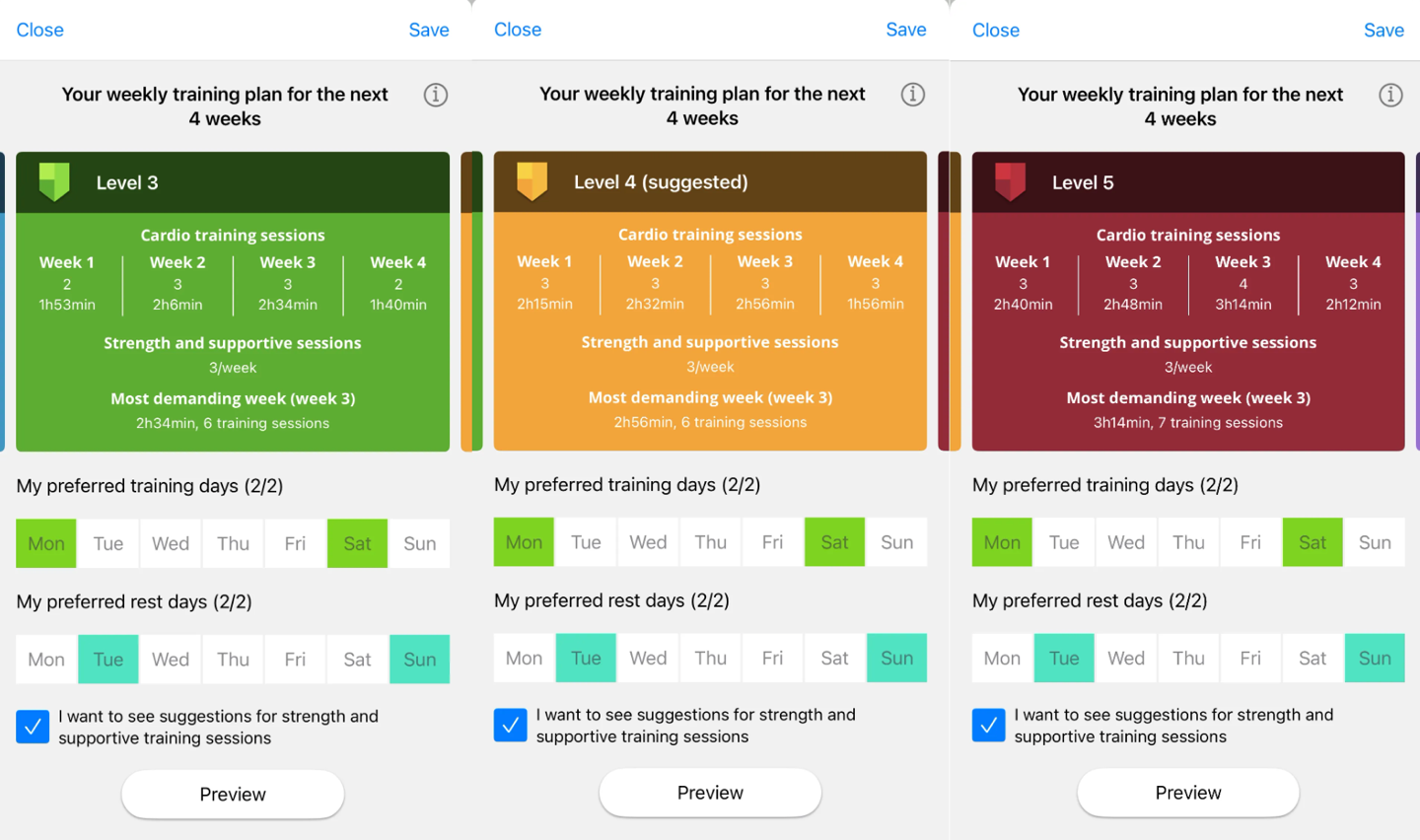
Upon launch, the Fitness Program will only be available on Android, with iOS coming later this year. Polar says that’s due to technical reasons rather than anything else (as I’d assume, like virtually all of their competitors, the majority of their customer segment is probably on iOS). The company is also offering a 14-day trial for those who want to give things a whirl. Oh, and it’s only available in Europe at launch. The US and other countries will get this at some point in Q2.
Speaking of which, the company says that “The new Fitness Program service does not affect the development of the free Polar Flow service in any way. Polar is actively working on many improvements and will continue to roll out new features to all users.” Of course, practically speaking, just like when Garmin says the same thing, we know that’s not really true. Still, Polar tries to prove that by noting the release of Polar Flow dark mode this week, with more features to come.
In any case, as for the Fitness Program feature, it’s found within the Polar Flow app, and the first thing to do is to confirm the onboarding pieces. Polar pulls this automatically from your training history in Polar Flow, assuming that exists. Else, you can fill it in manually (these are not my numbers, but screenshots provided by Polar).
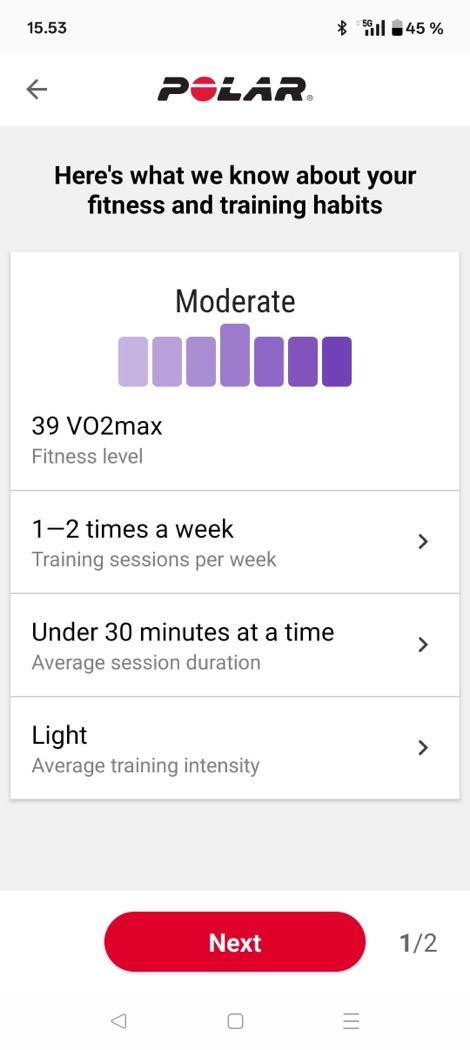
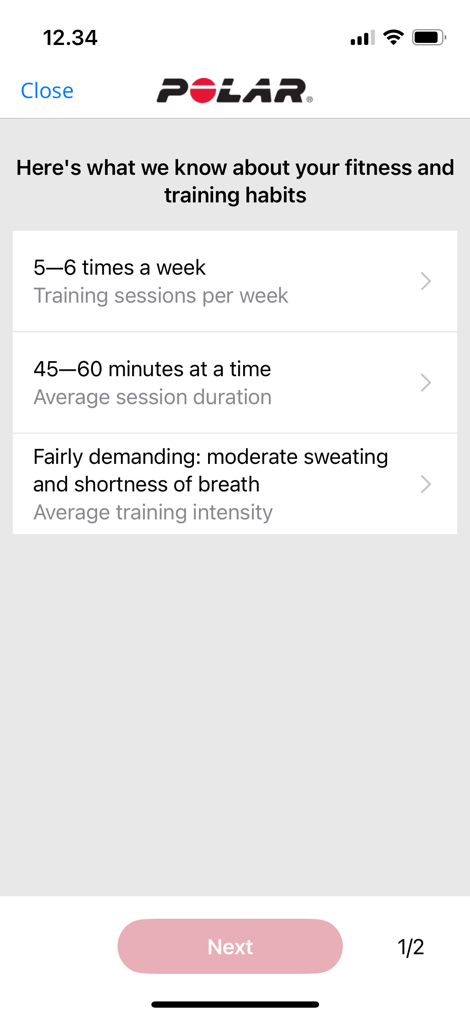
The next piece is selecting your preferred training days, and preferred recovery days. After which, you’ll be suggested a level. There are 20 different levels that you can work your way up. Your initially suggested level is based on your historical training data, though you can change it higher or lower.
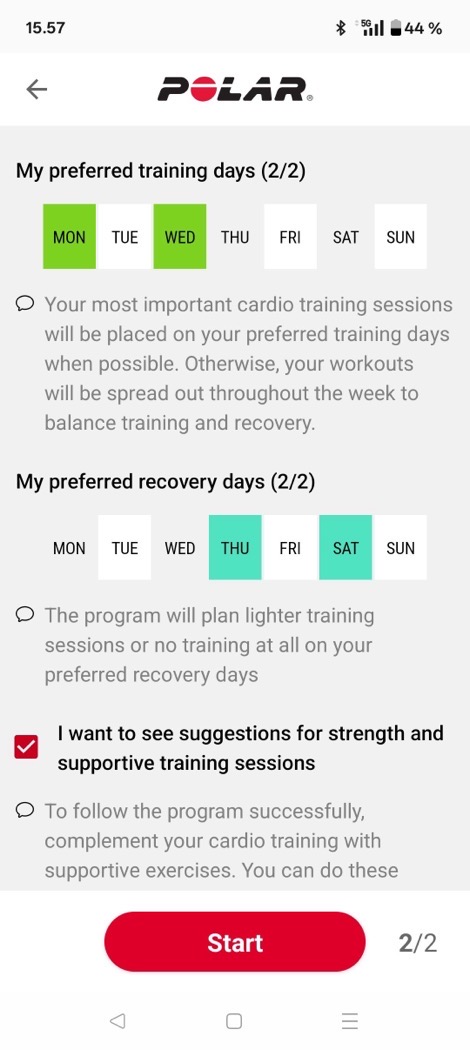
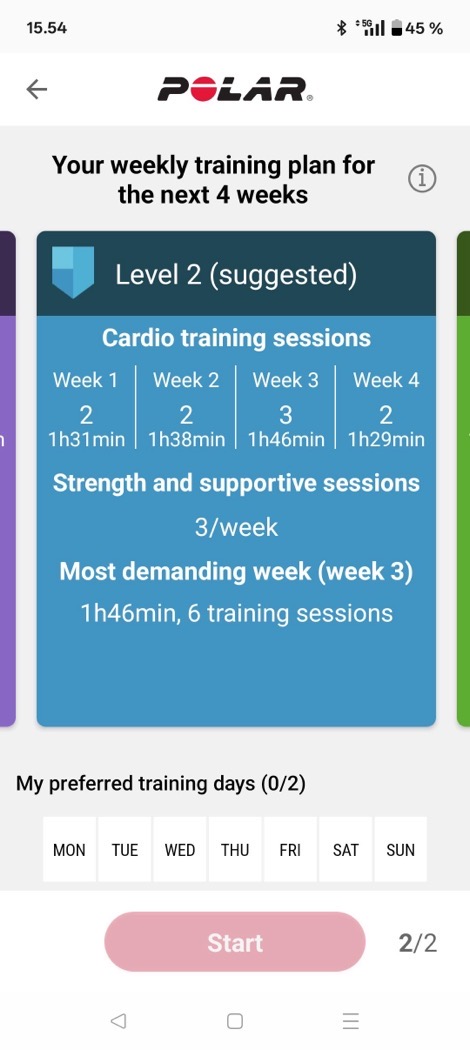
From here, it’ll show you a preview of the pain and suffering that’s upcoming (left), and here’s the calendar view once you’ve started the program:


At this point, you can begin the program immediately, or defer it, starting next week.
Now, once you’re in the program, it’ll start suggesting workouts to you, based on your daily metrics. This is akin to what Garmin and Fitbit do, which will adapt to things like poor sleep, or unexpected training load (e.g., when your friends convince you to go out for a chill 1hr ride, that becomes a 2hr hammer time session).

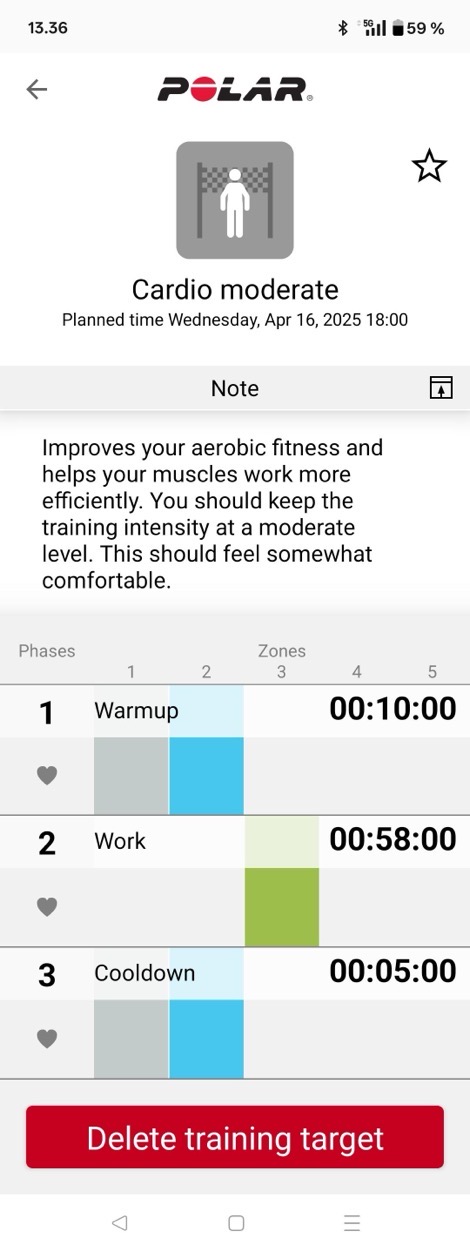

As you can see, these do include real human videos for some of these – a notable difference from Garmin, which doesn’t have video guidance in their free program. Garmin does have animations for strength workouts, but those aren’t automatically assigned, as strength workouts are still manually selected.
Conversely though, all of Polar’s guidance is specific to duration/HR zone. Meaning that it’s not going to tell you to run 10KM or cycle at 250 watts (whereas Garmin will tell you both). This falls in line with Polar’s past FitSpark efforts, which are purely time in zone based.
These workouts will be pushed automatically to your watch, just like past Polar structured workouts would be.
As you complete workouts you’ll work your way up in levels, as well as get summaries for each week.
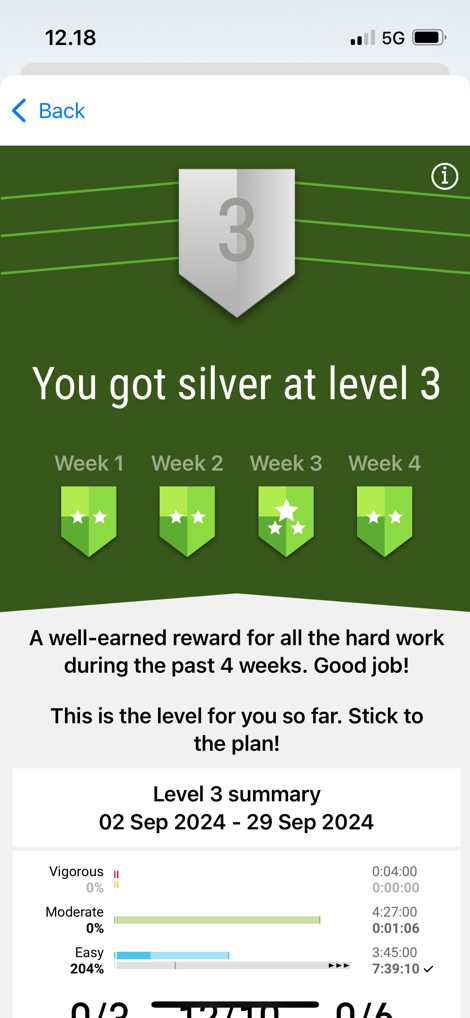
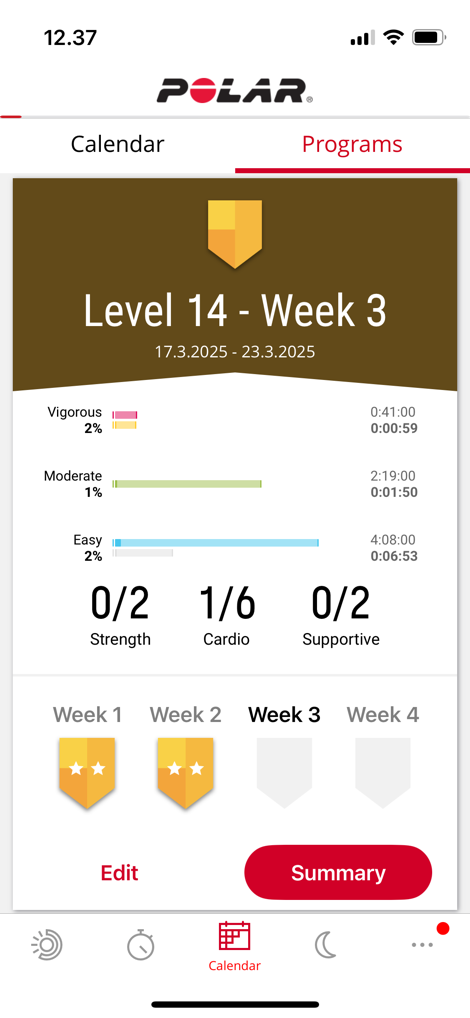
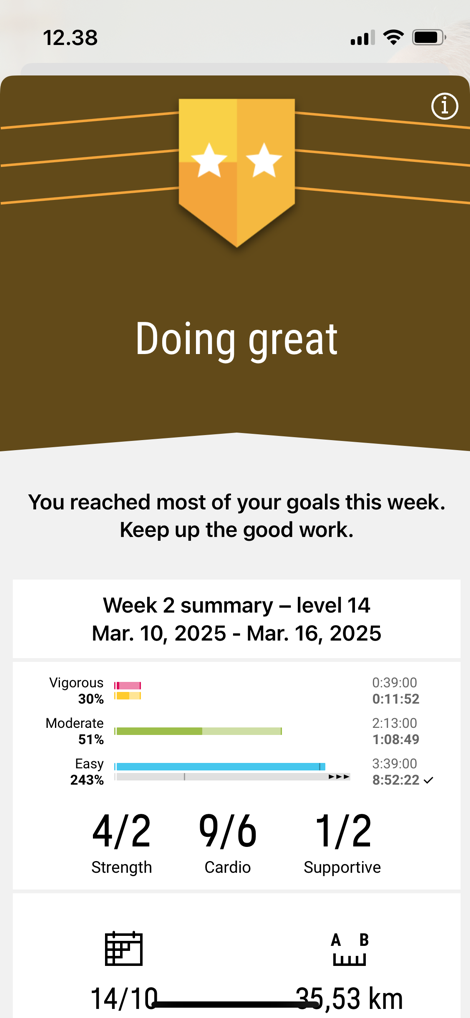
Likewise, if you scroll down, you’ll see your cardio load status, as well as other health metrics:
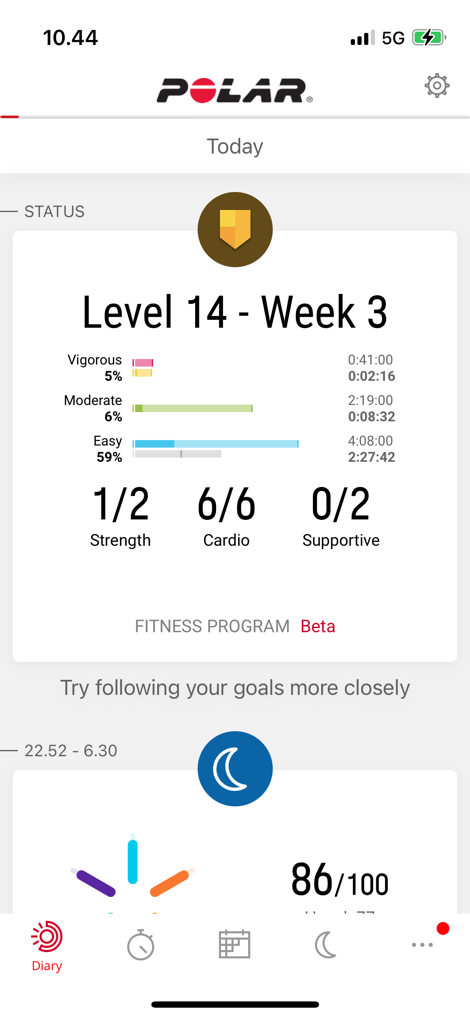
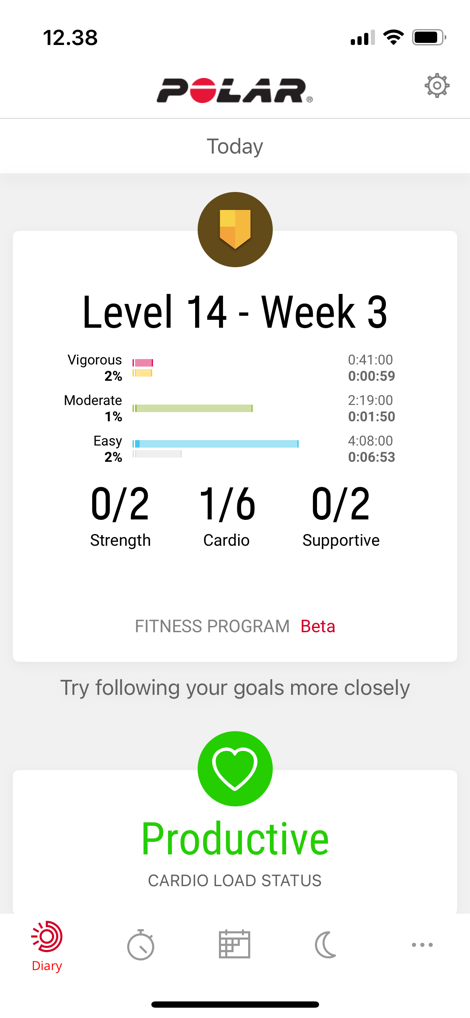
Polar says that the goal here is simply fitness improvement. Meaning as part of the onboarding you don’t select a specific goal like you might with a marathon time, or other distance-based metric. Instead, it’s similar to Garmin’s Daily Suggested workouts in that it’s always trying to improve fitness.
Whereas Polar also has their Running Plan feature (still free in Polar Flow), that is focused on a given running event/distance, and guides you towards that. Likewise, Garmin has the same if you put a running event/race on your calendar, then their Daily Suggested Workouts automatically change to guide you towards that specific goal.
With Polar, you can end the program at any time as well. They’ve got an overview of the platform here, and a much larger FAQ here (I really do appreciate Polar’s continued commitment to large FAQ pages and documentation).
Competitor Comparisons:
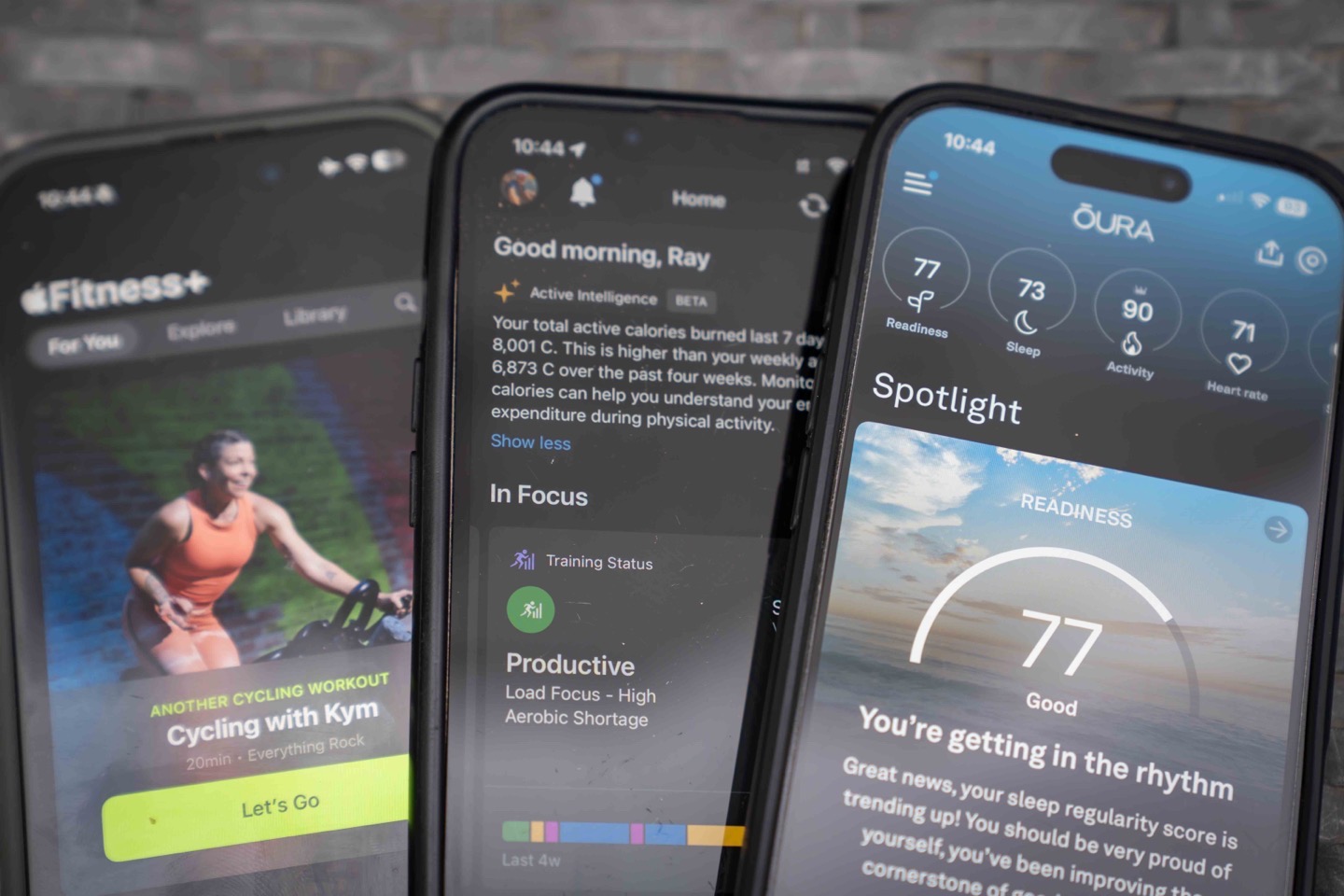
So, before we get into the details, how much will this set you back? 9.99EUR/month, with no annual plan at launch. Polar says they’re aiming to offer an annual plan later in the year, which will probably run about 70-80EUR/year, vaguely in line with other platforms from Fitbit, Apple, and Garmin.
Of course, the challenge with those other platform comparisons is that there isn’t a straight direct comparison from another hardware vendor. While Polar can point to various random smaller app-only competitors, I struggle to see validity in that comparison, given that people have paid a substantial premium for a Polar device. For example, their Polar Grit X2 Pro is priced at $749.
Nonetheless, here’s roughly where things stand on competitor offerings. I’m using annual prices, because frankly if you’re using one of these programs for any length of time, you’re paying annually:
Apple Fitness+ $79/year: – But this is really quite a different product. Apple’s offering is less about customized workouts, and more about a huge coached workout library with real-world humans leading those sessions across numerous sport types. In other words, more akin to Peloton than Polar. This also sets aside the fact that the subscription is even cheaper with Apple’s bundled subscription services, and has a 6-month trial. Point is, I don’t really see this as a direct comparison.
Garmin Connect+ $69/year: Again, these features are really quite different. In Garmin’s case, these are about pretty random app bonus features, rather than anything structured. That’s because Garmin provides for free their entire Daily Suggested Workouts pieces already (covering running/cycling/walking), with the full library of running/cycling coaching and strength workouts for free. And like Polar, all of this accounts for your sleep/HRV/activity/stress/etc data. Said differently, Garmin is literally giving away almost to a T, exactly what Polar is charging for. This is by far the biggest struggle Polar has.
Fitbit Premium – $80/year: This is probably the closest to what Polar is offering, in that the Fitbit is providing added features around run coaching, personalized workout programs, as well as connectivity with their Safety Signal feature on cellular connected devices. There’s also video/audio workouts and plenty more. Last fall (2024), Fitbit rolled some of their previously paid data features (like Daily Readiness) back to the free tier. So from a data standpoint, Fitbit basically opened all that up already to everyone for free.
Oura – $69/year: Again, like some of the other examples here, this is vastly different from what Polar’s doing. But, I wanted to include it as a reference point. Oura is more about wellness metrics (e.g., sleep/etc…) than it is about structured workouts and training goals. Most of what Oura provides at a data level, Polar does for free. And like Polar, Oura also charges for devices too, in addition to the subscription fee. Still, these days I see Oura as the sleep/health tracker for people that don’t have a different smartwatch device. I see virtually no value if you’ve got a smartwatch already.
Whoop – $239/year: Yet again, also different. Substantially different – in Whoop’s case, you pay for the service, not the device. The device is ‘free’, including replacements whenever Whoop gets around to releasing a new device (it’s been nearly 4 years). Further, Whoop’s platform, like Oura, is more about tracking your stats than it is specific structured workouts and plans. Yes, there are a handful of structured strength workouts, but they’re more of an afterthought than anything notable. Instead, Whoop is all about giving you data to balance workouts vs daily health metrics. Point is, kinda totally different.
In my discussions with Polar about this, they noted that various 3rd party apps (non-device manufacturer ones) had similar pricing to Polar’s Fitness Program, but lacked the integration with the Polar Flow platform for all the data that it can leverage (such as your sleep, activity levels, etc…). And that’s a fair observation, those 3rd party apps would indeed lack that kind of data, at least Polar’s version of it. However, some of them can connect to things like Apple Health or other data sources to gather that.
But to me, that’s not really their biggest issue. The biggie issue is simply Garmin gives everything away for free, that Polar is charging for. Compounding matters, Polar (like Garmin) put eggs in the ‘free’ training plans and such basket 6-10 years ago, whereas Fitbit never had training plans in the free basket. Instead, Fitbit acquired Fitstar a decade ago, and converted that into the beginnings of their paid program.
In other words, it’s about expectations and historical norms. Both Garmin and Polar had often touted these free platform aspects as fundamental to why you paid a premium for their devices. Now, these companies are trying to change that dynamic. While both of them promise this won’t impact development on their free features, nobody seriously believes that. Of course it will – arguably even more for Polar, given the much smaller pool of developer resources the company has.
Going Forward:
Polar’s new Fitness Program isn’t bad. Functionally speaking, it seems perfectly fine. Timing-wise though, it couldn’t come at a worse time. Had Polar launched this 3-5 years ago, I don’t think they would have seen any pushback. After all, Fitbit and others were essentially doing the same thing with paid coaching-like additions. But this isn’t 2020 anymore, and people are increasingly wary of ever-increasing subscriptions pulling away features they paid for with higher-end device purchases.
Ultimately, I keep thinking back to the one Polar thing that I think they could have massive success with (both product sales, and financially, including even a subscription if they wanted), which is their Polar 360 band that they announced a year ago and have been rolling out with business partners. That band essentially acts like a Whoop strap, but tied to the Polar Flow platform. It’s what countless people have been asking for, for years.
Frankly, it’s beyond baffling that Polar is trying to sell this device in relatively small quantities to corporations, rather than take what all signs appear to be an awesome offering, direct to consumers. They have numerous ways they could sell that device to consumers, including a one-time fee (as they do today for other Polar devices), or a one-time fee + subscription (like Oura), or a subscription-only model (like Whoop). All of which would be nearly guaranteed to take in far more revenue and profits than the Polar Fitness Program will. As I said before, short of the Polar 360 band catching fire on my wrist, all it has to do is what the existing Polar Flow platform already does, and they have a winner.
But hey, what do I know.
With that – thanks for reading!
FOUND THIS POST USEFUL? SUPPORT THE SITE!
Hopefully, you found this post useful. The website is really a labor of love, so please consider becoming a DC RAINMAKER Supporter. This gets you an ad-free experience, and access to our (mostly) bi-monthly behind-the-scenes video series of “Shed Talkin’”.
Support DCRainMaker - Shop on Amazon
Otherwise, perhaps consider using the below link if shopping on Amazon. As an Amazon Associate, I earn from qualifying purchases. It doesn’t cost you anything extra, but your purchases help support this website a lot. It could simply be buying toilet paper, or this pizza oven we use and love.

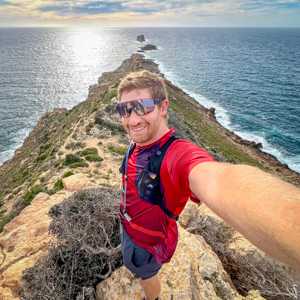





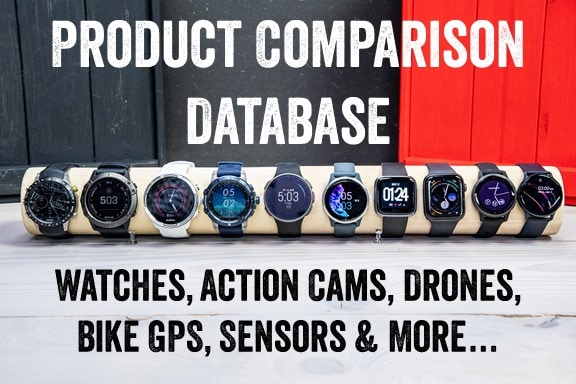
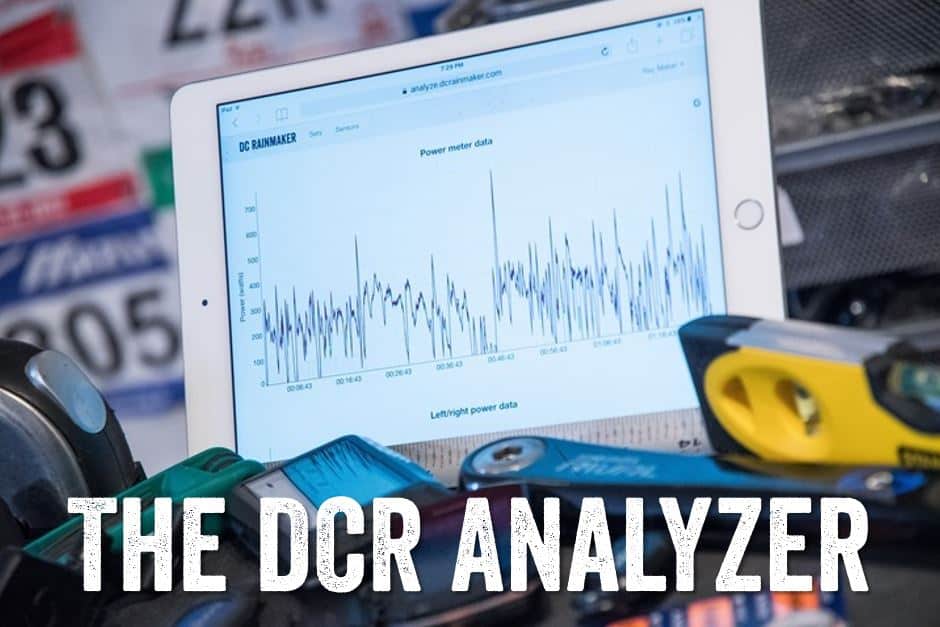

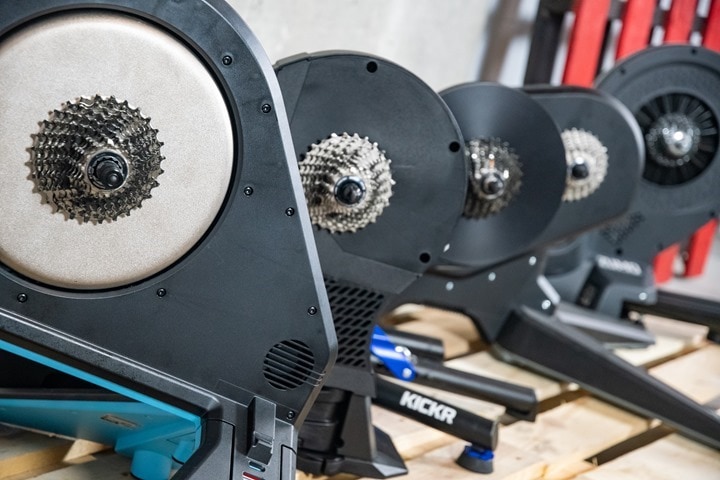

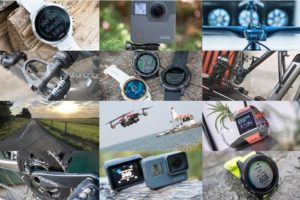
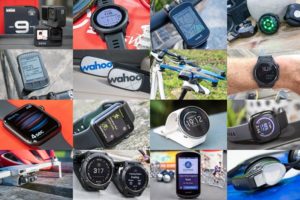

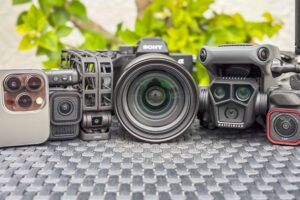

It would only take Suntoo and Coros to announce annual subscriptions to start the chaos.
Thank you for the detailed description.
I don’t really have a problem with a monthly subscription,
if it’s well done, motivating and not too expensive:
max. 5-7€ / month.
The catch: you get used to the development that new software/fitness/metric features will only come via the subscription.
Let’s see what it looks like in 3-4 years.
We can be glad that all these subscriptions weren’t around 10-15 years ago! Then we would probably have had Garmin, Polar and Suunto watches that only displayed time, distance and duration. All other information/metrics: only via their subscriptions.
I like Polar as a brand, but I wonder what they’ve been doing all these years? Since the first Grit X (4-5 years ago!) their Polar Flow app and the Polar watch OS still looks the same.
Where is:
– a new Polar Flow app in a complete new and fresh design that fits the year 2025?
A new Polar Watch OS 4.0 with:
– Tap-to-wake for the display
– multiple alarms
– nap detection
– assign functions to the long press of the buttons
– much better quick selection (for example like Garmin: 10 icons arranged in a circle)
– Sport profile selection:
Smaller icons (with different colours) with the text to the right!
– complete revision of the start screen design:
these e.g. 3 small separate circles (heartbeat, GPS, smartphone) look sooo old school!!!
– Permanent automatic display of the battery indicator: optional
And I wonder about the Polar 360 as well:
Why not as a Whoop competitor with a subscription price of 6-8€ / month and new own (?) modern app?
WHAT has Polar been doing for the last 4-5 years?
Only worked on the dark mode?
Suunto and Apple will probably benefit from all these developments.
It’s just sad with Polar,
They could be somewhere else!
But I think they lack the ability to listen to the wishes and criticism of their own users.
That’s probably why they no longer have their own Polar forums.
This is not healthy and will take its revenge!
> called Program Fitness Program
Is that meant to be *Polar* Fitness Program? 🤔🙂
Typo in Competitor Comparison:
“The biggie issue is simply Garmin gives everything away everything Polar is charging for.”
I think you meant either “gives everything away” or “gives away everything”.
One more: “Program Fitness Program” in the second graph 😉
Thanks! Need more coffee…
Yes, the timing couldn’t be worse. Also today it’s easy to find third party apps that integrate several signals from different brands, being through Apple Health, Oura, Garmin, Strava, etc. So your brand offering better be really good with what you have OR globally cheaper, otherwise the external app will always trump it because it’s brand agnostic, has more signals to work with and generally will be much more agile and responsive to user needs.
I simply love Polar for their web portal GUI. Don’t like the Garmin’s, the Coros’s was okayish last time I checked (Pace 2 times). The Polar Pacer Pro is very good. Better than M430 which was already perfect (if not for long-GPS-searching before a run). I don’t wear the watch all the time, though – only for workouts. A Whoop-like band would be great. I wish this company just made a new watch in this mid price range (I don’t need amoled and maps, so maybe something Instinct-like?) that has a strap mounted to the watch like in Pacer Pro (such that it does not rotate just near the watch, because then the watch rotates on my wrist). That’s all. A fitness band that would take less space than a watch during sleep would be… awesome indeed. And some cool running suggestions would be good as well, the current ones are funny – after a 3 month detraining/inactivity time I’m still getting HEY LET’S DO a 2h LONG RUN, when I’m just barely doing 7k, lol. One friend’s been telling me Garmin does this better, but only until a certain fitness level (10k in 45min or something), so he got a coach and is making progress – I guess this is the most efficient option all in all. And I’m still with Pfitzinger’s books… trying to figure out where all my regeneration capacity went and why I can’t sleep, heh. Maybe some day my kids are older and “I’ll be back”.
̶I̶n̶v̶e̶r̶s̶e̶l̶y̶ 🧐
Conversely 😃
Surely if Polar wanted to customers to jump ship to their brand and devices, the biggest USP should be “we don’t charge for premium features, unlike our competitors”
I’m not clear on what the Garmin/Polar offerings include that I don’t get from a 3rd party coaching program like Athletica.ai or Training Peaks. And that makes me nervous. As of today, Athletica integrates nicely with Garmin, with workouts pushing to devices, etc. Could Garmin/Polar/etc go to a model where I need to pay a connector fee (or where they charge the coaching program a connector fee that they push to me)? If they do, would it be a reasonable fee (like $1 per month), or would it be punitive as an enticement to migrate to their premium platform?
I’m going to dust off my old Polar 725 and SERIOUS Endurance training Excel model if everything starts to go in that direction.
I’m thinking any fitness service without a leash in the form of some kind of hardware is going to be at a disadvantage soon. If Garmin and TrainingPeaks are functionally the same in the future as far as data and coaching (they are not right now), why would Garmin want to be inter-operative with them? And I doubt TrainingPeaks has the capability to develop their own head-unit or watch.
I do enjoy a good dumpster fire.
Saying that, the continued Balkanization via paid subscription requirements of all these services makes me wonder what the end game will be. As market share and reach continues to fragment, individual companies’ market and subscriber share will become more sensitive to new feature appeal at other sites. Missteps now engender hostility, but customer inertia keeps them in place. Eventually, that check in subscriber loss will attenuate. It has continued to surprise me that FaceBook hasn’t rolled in (financially) hot on top of one of these companies and done a hostile takeover. Hoovering up users and features, insisting continued use of Brand X fitness company now requires a FaceBook account. For an actual example of that, consider how Occulus is now requiring a Meta account. Or Google with FitBit. I honestly thought Strava was going to be forcibly assimilated (Borg reference applicable) a few years ago.
I can’t wait to see the Apple Watch (specifically the Ultra) finally get the software backing it deserves. The last few years I’ve expected to see Apple launch a more developed, adaptive training platform – and been disappointed. I still have my Fenix 7XSS and wear it for the majority of my training at the moment, but I’d love to have my AWU2 meet all those needs instead…and when it finally happens, it’ll be factored into my monthly Apple subscription anyway.
Is it just a coincidence that Polar Flow just stopped tracking my weekly cardio load? All I can do is look at my calendar, or scroll back through recent workouts. The Weekly Cardio Load screen with Load, Strain and Tolerance is gone, and there is no estimate of my current training level (Detraining, Maintaining, Productive or OverTraining).
Garmin has incorporated scheduled strength into their running and cycling coach plans. It actually works pretty well and makes sense in the flow of daily suggestions for the week. I used to pay for a training platform but I have been really enjoying Garmin’s adaptability and it’s nice to have one less subscription.
The product I want to buy from Polar is basically the Polar 360, but with the full list of sensors they already have in the Varity Sense (Magnetometer, Gyroscope and Accelerometer) for some reason they include in the 360 only the Accelerometer.
And second add all of the fancy scientific algorithms they already have on the Vantage V3, especially those from the Training & Recovery section. Do that and I will be happy to pay a price in the mid range watch space for such a device.
Don’t need a screen, I need durability, and some comfort. As a context I’ve been trying to DIY my Polar H10 into a 24/7 tracker, but I can’t say it’s possible to sleep well with a heart rate strap.
This is such a low effort by Polar. Essentially a Fitspark+ with scheduling and levels. Anything to avoid updating firmware. You see that with their Training Peaks and Komoot integration. Ever since they promoted their head of marketing to CEO, Polar has come up short. I’m not sure why they are still in business.